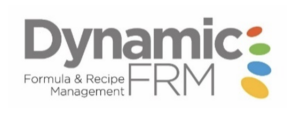By Joe Bailey, Food and Beverage Product Lifecycle Management Subject Matter Expert.
Product Lifecycle Management (PLM) solutions, like Dynamic FRM™, provide several strategic benefits including speed to market, deeper product analytic visibility across your supply chain, and a single platform for cross functional communication. As a senior leader there are many ways you can enable and support a PLM initiative. Here are some ideas:
1. Create a business case and buy-in amongst executive leaders of the PLM’s strategic benefits.
Businesses have lots of priorities competing for financial dollars, the key is how do you get a PLM to stand out and get buy-in for the benefits it offers. PLM, while creating process efficiencies, also provides deep analytical insight into products and processes, helps accelerate time to market, and facilitates cross collaboration across departments. This aids companies to achieve best practices and eliminate process inefficiencies. Executives and daily users can both make real-time, informed business decisions based on unprecedented visibility into product data. PLM solutions like Dynamic FRM™ provide a wholistic view from ideation through end of life, including project management and interaction with other systems such as ERP and LIMs.
As a senior leader, it is critical that you help build the ROI for how PLM can take your business to the next level. This can be challenging as some benefits are difficult to make tangible, and not all are traditional revenue benefits. Some examples include:
- Labor savings
- Prevention of product recalls
- Reducing time to market
When assisting our clients with the planning for a PLM initiative, New Dynamic utilizes an ROI template that includes an example of labor savings and training ROI. To request a copy of our ROI calculation template, click here. This tool can be a great start, however, ROI calculation can be much more expansive, as there are many things to consider when evaluating ROI. Here are some additional factors many companies take into consideration when evaluating potential ROI:
- Number of departments impacted
- Reduction in human errors
- Improving QA processes like traceability and reduction of recalls
- Reduction in product launch delays and opportunity to increase throughput
- Audit communication and ability to improve root cause analysis
- Improvement in collaboration with partners such as suppliers and co-manufacturers
2. Identify criteria needed in a PLM solution.
Typically, you have an idea of critical needs for a PLM, but are you aligned as a company on those priorities and needs? When deciding on a new PLM solution, companies typically evaluate multiple options, and it is important to identify your critical needs and to be consistent in evaluating your options for the best overall PLM. A way to help with this is creating an evaluation template to be completed by your users for each PLM demo, in this way you are consistent in how you evaluate your options. Click here to request a copy of the New Dynamic PLM Evaluation Template.
3. Help the team see the big picture.
When starting a new PLM and/or ERP project, companies many times want to take what they are doing today and customize the new system to fit those needs. It can be like fitting a round peg in a square hole. Doing this, you potentially lose the opportunity to implement best practices.
Implementing a new PLM system can be a great time to decide what is best for your overall product development practices and improve what you are doing. As a senior leader, you can help steer your cross-functional teams through discussions on designing the process the way it should be and look at the big picture outside of others’ purview.
A good way to do this is identify all the business processes that touch your product lifecycle strategies. Here are some ideas:
- Getting and sending data to 1WorldSync
- Managing artwork updates on packaging
- Overseeing the certification process for new products
- Commercialization handoff to the production floor
- New product development reporting and management
Another idea is to get representatives from each department impacted by the individual process and map out the high-level business process and ask questions such as:
- What is working well (do not just look at the system process, but consider the overall business process as well)
- What is not working well?
- What could make things better?
A lot of times with these discussions people have an “ah ha” moment where they did not realize someone was doing something. Strive for improvement rather than implementing what you have always done and be willing to question the status quo.
Also, it can be easy for employees during a PLM implementation project to be myopic and only see their individual needs, rather than what would be best for the company across all departments. As a senior leader, you can help guide those conversations with employees, helping them see beyond what they do daily. These projects can develop future leadership skills in employees as they advance their knowledge of the company.
To summarize, a senior leader’s role is critical in selecting and navigating a new PLM implementation. Your influence and can help employees see the bigger picture and guide them towards successful implementation with an ROI that expands across the entire organization.
Working with New Dynamic
New Dynamic is a Microsoft Solutions Partner focused on the Dynamics 365 Customer Engagement and Power Platforms. Our team of dedicated professionals strives to provide first-class experiences incorporating integrity, teamwork, and a relentless commitment to our client’s success.
Contact Us today to transform your sales productivity and customer buying experiences.
Join the Dynamics FRM™ Community
If you found this blog helpful, subscribe below to receive our monthly updates.







